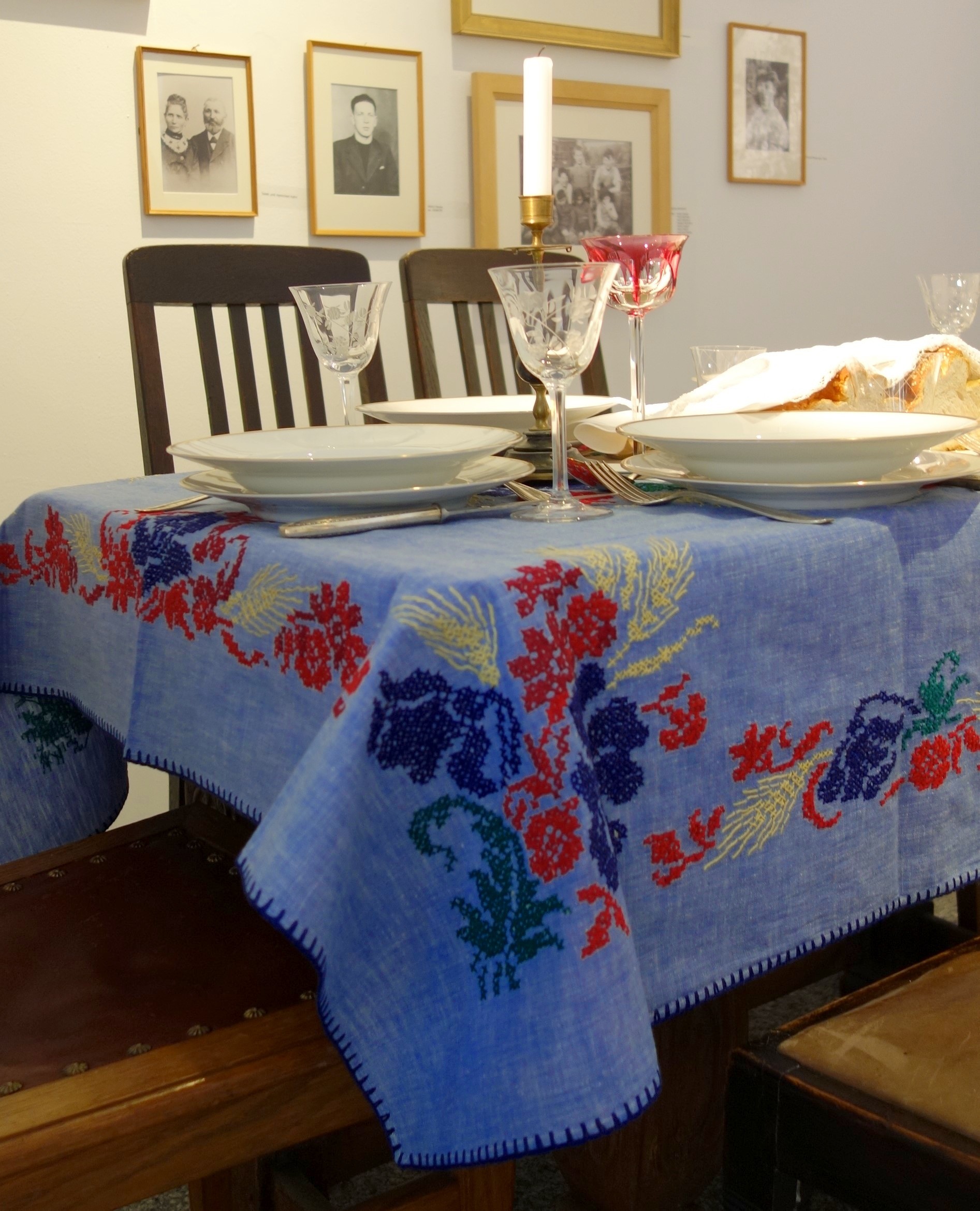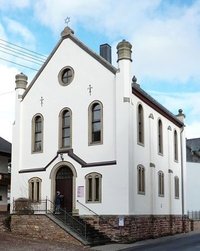This tablecloth, made of light blue woven material with a dark blue crochet border, was most likely designed for a dining table. It is embroidered with cotton yarn to depict red, yellow, blue and green harvest themes. The tablecloth found its way into the collection at the former synagogue in Laufersweiler thanks to a contemporary witness from Kastellaun. She told of how the Jew, Ilse Wolf, visited her mother and sister one day in 1942 and gave them the covering with the words „I’ve embroidered all my tears into this tablecloth“. She evidently asked them to keep the cloth for her in safekeeping in anticipation of her pending deportation. If she didn’t return, then the family should preserve it in remembrance of her.
Ilse Wolf was born in Kastellaun on the 7th of September 1923 to her parents, Ludwig Wolf and Franziska Frieda Wolf née Hammerschlag. At some unknown point in time, they moved to Bendorf-Sayn, where she was registered as a nurse’s aide in the “Israelite Nursing and Care Home for the Mentally Ill and Emotionally Depressed”. Ilse Wolf was deported with a transport from Koblenz to Sobibor on the 15th of June 1942, after which any trace of her was lost. Her mother was also deported in 1942, although where she was deported to and her ultimate fate are not known either. Ludwig Wolf was murdered on the 23rd of September 1942 at the concentration camp in Sachsenhausen.
The Jacoby Mental Hospital was an important employer in the region for both Jewish as well as non-Jewish workers. Having said this, virtually all of the workers from 1938 on were exclusively Jewish, as many of them had lost their former jobs. Some of them viewed their stay merely as a way-station; anticipating a planned emigration to Palestine where they would find work in an agricultural capacity.
From 1940, however, the mental hospital increasingly took on the role of an assembly camp, to which Jewish patients were brought from all over Germany. Ultimately, between March and November 1942, both its residents and the care givers were deported to the death camps in the east. The mental hospital was disbanded by order of the German Minister of the Interior on the 10th of November 1942.
de

